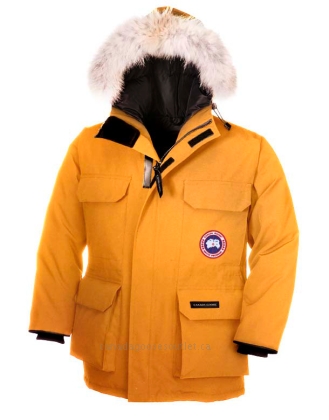It’s a hot property even in what has been a relatively balmy Canadian winter and Canada Goose Inc. intends to protect its highly recognizable brand even if it means a legal battle.

For more than 55 years, Canada Goose has built a strong business on the warmth and fashionable look of its jackets, but in a high-profile trademark infringement lawsuit, it claims another company is hijacking its brand. The case is prompting trademark experts to remind companies to shore up the protection of their marks in light of this case and others that are making headlines these days.
In a Jan. 31 court filing, Canada Goose alleges that International Clothiers is misleading Canadians by using “confusingly similar” patches and logos. The International Clothiers coats have been available since 2009.
Canada Goose claims its red, white, and blue logo patch and placement on the left arm of its jackets form a “highly distinctive trademark” that International Clothiers is violating with its Canada Weather Gear and Super Triple Goose products. They want the court to force International Clothiers to stop selling the jackets and, with Canada Goose’s supervision, destroy their remaining stock.
In its claim, Canada Goose says multiple complaints about the alleged infringement went nowhere.
None of the allegations have been proven in court. International Clothiers have 30 days to file a statement of defence.
The lawsuit is similar to other cases including Gap Inc. versus G.A.P Adventures. Although Canada Goose has not yet claimed a specific amount in damages, the Gap battle cost the Canadian adventure travel company $5 million and a four-year legal battle, demonstrating how much trademark infringement can cost a business.
Kathleen Lemieux, a partner in the intellectual property group at Borden Ladner Gervais LLP says companies need to be aware of the opportunities out there for infringers to take advantage.
“If a company is benefiting from your reputation by mimicking your brand look and feel or your products, that can have a direct effect on your bottom line and on the value of the brand you have created,” says Lemieux. “In the Canada Goose case, where the company prides itself on delivering quality, Canadian-made products, the concern is that consumers will confuse the brands and the reputation of Canada Goose will be harmed by being associated with similar-looking garments that may not deliver the same value.”
Canadian businesses building their brands in new markets like China should be particularly careful when it comes to their intellectual property. Ikea and Apple are two companies with big brands that discovered last year they had been cloned in China.
Lemieux notes several steps companies should consider to protect their brand such as registering IP rights in China or other jurisdictions they may consider for growth outside Canada.
“It’s so much cheaper and easier to get protection for your IP assets in the beginning than to try and get them back. It’s so difficult to get any assets back once an infringer has taken over in the Chinese market,” says Lemieux.
The situation that often happens, she says, is that a Canadian business enters into an agreement with a distributor or other partner in China without any trademark rights and that manufacturer or licensee will go out and register the trademark. “All of a sudden it’s difficult to get that mark back,” she says.
To avoid any surprises overseas and to protect a brand here at home, Lemieux recommends Canadian businesses take the following steps:
- Conduct searches to clear your brand and trademark before adopting, using and applying for a trademark registration.
- Once selected, register your brand name as a trademark and use it. Registration (and use) will serve you well if you ever have to go to court to stop an infringing use.
- Online business owners should consider whether setting up online alerts to seek out cases of trademark infringement is a good strategy for their business. This may be the best way of protecting the business’ brand and ensuring that the worst offenders are taken to task.
- If you have significant growth plans in mind, consider registering your intellectual property rights in China. A Canadian trademark or patent registration does not provide automatic protection in other jurisdictions, including China.
- Most importantly, consult a law firm familiar with IP law to help identify what you should be protecting and guide you through the registration process.

 For more than 55 years, Canada Goose has built a strong business on the warmth and fashionable look of its jackets, but in a high-profile trademark infringement lawsuit, it claims another company is hijacking its brand. The case is prompting trademark experts to remind companies to shore up the protection of their marks in light of this case and others that are making headlines these days.
For more than 55 years, Canada Goose has built a strong business on the warmth and fashionable look of its jackets, but in a high-profile trademark infringement lawsuit, it claims another company is hijacking its brand. The case is prompting trademark experts to remind companies to shore up the protection of their marks in light of this case and others that are making headlines these days.